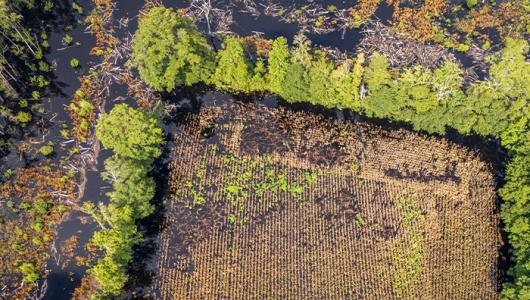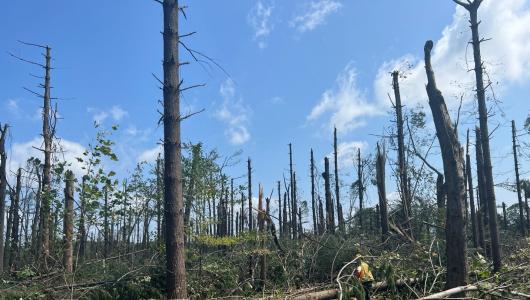Farmers and ranchers rely on crop insurance and disaster assistance programs to both prepare for and recover from natural disasters. For certain crops that do not have an insurable option available, the Noninsured Crop Disaster Assistance Program (NAP) provides coverage options.
This Farm Service Agency (FSA) program provides financial assistance to producers of non-insured crops impacted by natural disasters that result in lower yields, crop losses, or prevents crop planting, including crops grown specifically for food, fiber, livestock consumption, biofuel or biobased products, or be commodities such as value loss crops like Christmas trees and ornamental nursery, honey, maple sap, and many others. However, NAP doesn’t cover losses due to negligence, or any failure to follow good farming practices.
Demetrice Evans, FSA Agricultural Program Specialist in Mississippi, answers some of the top questions and explains the importance of good farming practices.
1. What Are Good Farming Practices?
A farming practice refers to any practice that could impact the quantity and quality of the crop, from ground preparation through harvest.
Good farming practices are those that:
- are the cultural practices generally recognized as compatible with agronomic and weather conditions for an area,
- ensure a crop makes normal progress toward maturity, and
- allow a farmer to produce at least their approved yield, which is based on individual production capacity or a percentage of the expected county yield.
For organic farmers, good farming practices are generally recognized by organic agricultural experts for the area or those contained in the farmer’s organic system plan that is developed in accordance with the National Organic Program’s certification requirements.
Producers are strongly encouraged to follow the recognized farming practices adapted to the area, which has been successfully carried out by neighboring producers. This will also ensure producers’ expected yields are within reason. These practices are normally those recognized by Cooperative State Research, Education and Extension Service as compatible with agronomic and weather conditions.

2. Do You Have to Follow Good Farming Practices?
Farmers who obtain NAP coverage for their crops are required to follow good farming practices as defined in the NAP Basic Provisions.
Failure to follow the agricultural expert-recognized good farming practices for your NAP covered crop may result in a denial of a NAP program benefit or a reduction in your NAP payment if you file an application for payment.
3. What Are Examples of Good Farming Practices?
Producers should be following good farming practices throughout the production period to ensure production methods do not adversely affect the quantity and/or quality of the crop produced and harvested.
- Before planting: Choose the right variety of plants to get a good crop with a high yield and a good market price; plan appropriate field activities; and prepare the field for planting, including proper fertilization.
- During planting: Plant at an appropriate time and choose appropriate planting methods.
- After planting: During the growing season, focus on practices such as watering, fertilizing and weeding.
- During harvest: Use efficient harvesting methods to maximize crop yield and minimize damage.

4. How Do I Prove I’m Following Good Farming Practices?
To show you’ve followed good farming practices, your best protection is to keep detailed records. Your records should include, but not limited to:
- Practices you have in place to produce and protect your crops;
- Receipts for inputs like seed, fuel, fertilizer, pest and weed control, water usage (if irrigated), etc.;
- Annual production records; and
- Name and date of conversations with “experts”.
These records should be kept separate for each crop, just like your production records.
Like all businesses, the success of any farming operations evolves around good and accurate recordkeeping. This is imperative to the long-term success of any operation.
Good farming practices vary from crop to crop and from region to region. If you have any questions about what practices are considered good farming practices, about obtaining NAP coverage or your current NAP coverage, please contact your local FSA county office. To locate your local FSA office, visit farmers.gov/service-locator.
Producers of crops and livestock that are covered by crop insurance must also follow RMA’s good farming practices. If you have any questions about what practices are considered “good farming practices,” or about your policy, please talk to your crop insurance agent. A list of agents is available online using RMA’s Agent Locator.
Ciji Taylor is a public affairs specialist with USDA.


